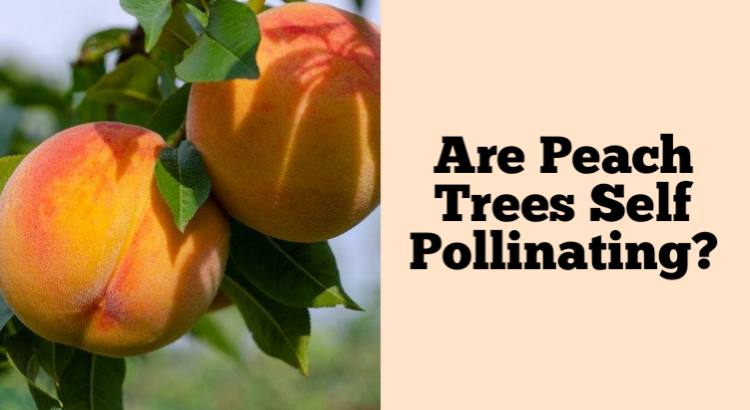If you’ve ever wondered if your peach tree will pollinate itself, the answer is yes. Peach trees are self-fertile and can therefore pollinate themselves without the help of an outside force. However, some factors may influence whether or not this happens.
The pollination process of peach trees is often thought to rely on the presence of another tree and the honeybee.
This can be true, but it’s not as simple as you might think.
For one thing, there are many different types of bees that pollinate plants besides honeybees (bumblebees, bumble-flies and mason bees) and they all have their own unique way of helping out with cross-pollination.
Additionally, some peach varieties are self-fertile meaning that they produce fruit without need for cross-pollination from another tree.
In the home garden especially, it is often assumed that the presence of two peach trees is necessary for successful pollination and fruiting.
This can be a very common misconception. In fact, there are many cases where one tree will produce fruit without any cross-pollination while another may produce significantly more fruit with cross-pollination.
This is because the amount of fruit a tree will produce is not solely dependent on its genetics. It also depends on factors such as soil quality, fertilization and climate.
Peach trees are generally self-fruitful, so having only one tree will produce fruit.
In fact, peach trees are one of the few fruits that don’t need any cross-pollination to create seeds. This means you can have as many peach trees as you want and still have a good yield each season (assuming they’re all healthy).
If your goal is heavy fruit production over extended periods of time—say 10 years or more—then adding another tree will greatly increase your chances at getting additional fruits at harvest time.
However, if your goal is more moderate yields over shorter periods (such as three years), then it might be better just to grow a single tree rather than two or more because there may be too much competition between them for resources such as water and nutrients in the soil around them.
Peach trees are in the same family as nectarines and cherries, which means they all belong to the genus Prunus.
There are several species within this genus, but peaches only come from one: Prunus persica. The tree itself is deciduous (loses its leaves in winter), so it grows on a single-stemmed trunk with branches that can reach up to 30 feet high and spread out more than 50 feet wide.
The branches have clusters of small white flowers at their tips; these flowers eventually produce fruit that ripens into juicy peaches.
You need at least one peach tree to get peaches.
If you want to grow peaches, you need at least one peach tree. Why? Because peaches are self-pollinating. In other words, each tree can produce its own fruit without another tree nearby for pollination purposes.
This is because peaches are what’s known as parthenocarpic—they don’t require cross-pollination from another variety in order to produce fruit.
Peaches are actually drupes or stone fruits.
The pit (stone) is found in the center of the fruit and has to be removed before you can eat it.
Peaches do not just appear out of thin air and require some attention from you each season if you want them to be successful.
While many peaches are self-pollinating, there are still some things you need to know about the fruit tree before planting it in your garden.
If you plan on growing peaches from seed, I highly recommend purchasing grafted trees instead.
If this is not an option for you, there are ways to grow peach trees from seed that will make it easier for them to produce fruit on their own when they’re mature enough.
If you are planting a peach tree from seed, it is important to know that the trees will take 6-10 years before they start bearing fruit.
If you want your peach tree to produce fruit sooner, there are ways to speed up its growth process.
However, yield can be increased with multiple trees for cross-pollination and pollinator diversity.
Cross-pollination increases fruit yield. It’s a fact that when bees visit flowers, they transfer pollen from one flower to another.
Cross-pollination also increases fruit size and quality—in other words: bigger fruits mean better tasting peaches.
If you’re going after bigger fruits but aren’t sure how they’ll taste yet, try grafting two different types together at first before trying again later on down the line once more mature trees have been established around them.
You do not need two peach trees for pollination, but it may increase fruit yield.
If you have only one peach tree and want to increase your crop, it’s best to plant another tree nearby or in the same area. This will help pollinate each other and produce more fruit than if they were planted separately.

